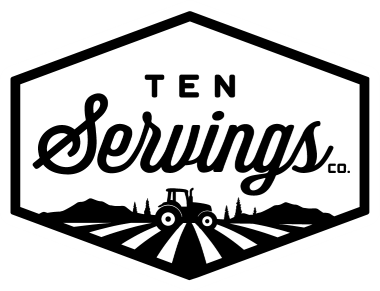If you’ve ever tried growing potatoes—or even just talked to someone who has—you’ve probably heard all kinds of advice. Some of it’s spot on, some of it... not so much. Whether you're managing rows and rows of crops or have a few potato plants in your backyard, busting a few myths can go a long way. Let’s break down some of the most common potato myths, with a little extra context for farmers and gardeners.
1. Green potatoes are fine if you cut off the green part.
Not exactly. That greenish tint is a sign of chlorophyll, which means the potato has

developed solanine, a natural toxin that can be toxic. In the last 100 years, there have been around 20 deaths associated with green potatoes. However, I put it to the test myself, eating green potatoes for 3 days, and I’m still here. So will it kill you? Probably not. To reduce the solanine, you can peel the potato and microwave it.
So, what do we do with green potatoes at the farm? We sell it as cow feed! Even though they’re toxic to humans, they are perfectly fine for animals. That way, we reduce waste too.
2. Letting the plant die back improves the skin.
True—but how much that matters depends on what you're planning to do with your harvest.
- 👨🏻🌾🌾 For farmers, letting the vines die back (often by cutting the plant tops) helps the potatoes develop thicker, tougher skin, important for storage and transport. Sometimes we store our potatoes for up to 8 months, so this is crucial for us.
- 👨🌱 For gardeners, skin set isn't usually a big deal. If you’re eating them fresh, you don’t need that extra curing time. Fresh-dug “new” potatoes with thin skins are a treat!
3. You have to cut seed potatoes to double your yield.
Not necessarily. Cutting seed potatoes into chunks (each with at least one eye) is common, especially when you want to make the most of a small batch. You might not double your yield, but you’ll grow more. But you can also plant them whole, especially if you’re only growing a few plants. It’s simpler, with less risk of rot, and works just as well.
4. You must chit your potatoes before planting.
Chitting—letting potatoes sprout before planting— will definitely give your crop a head start. It’s actually part of the reasons that allow us to harvest the first potatoes in Canada. Plus, it gives them a better chance at survival. But it's not strictly necessary. Many large-scale growers skip it altogether. For home gardeners, though, it can be a fun and effective way to get earlier growth, especially in cooler climates.
5. Hilling up gives you more potatoes.
Hilling (piling soil around the base of the plant as it grows) is important, but not because it magically increases your yield with every extra scoop of dirt.
This is where it helps to know the difference between growing at scale and growing for fun:

👨🏻🌾🌾 For farmers, hilling is about protecting developing tubers from Mother Nature, especially rain, and preventing greening. A pass or two with the right equipment does the trick.
👨🌱For gardeners, hilling once or twice—usually when the plants are 6 to 8 inches tall—is enough, but not necessary.
Hilling will depend on your goal and where you live. If it rains a lot where you are, or you are in doubt, I recommend you do!
7. Sprouted potatoes are not edible.
False. Sprouted potatoes are edible, just less fresh. Take the sprouts off, and you’re good to go! They are better used for mashed potatoes than fries, but still perfectly edible.
8. Raw potatoes are fine to snack on.
Technically, yes—but they’re not super tasty. But if you’re on a desert island, go for it!
Final Thoughts
There’s no one-size-fits-all approach to growing or eating potatoes. What works perfectly on a farm might not make sense in a backyard garden—and ice versa. The key is to understand the reasoning behind each practice and decide what fits your setup. Potatoes are hearty, forgiving plants, and with a little knowledge, you’ll be growing (and eating) them smarter than ever.
Plus, they are one of the foods you can grow from your grocery scraps. Want to learn what else you can grow without buying seeds? Read our blog article!



